BTC price at yearly open into FOMC — 5 things to know in Bitcoin this week
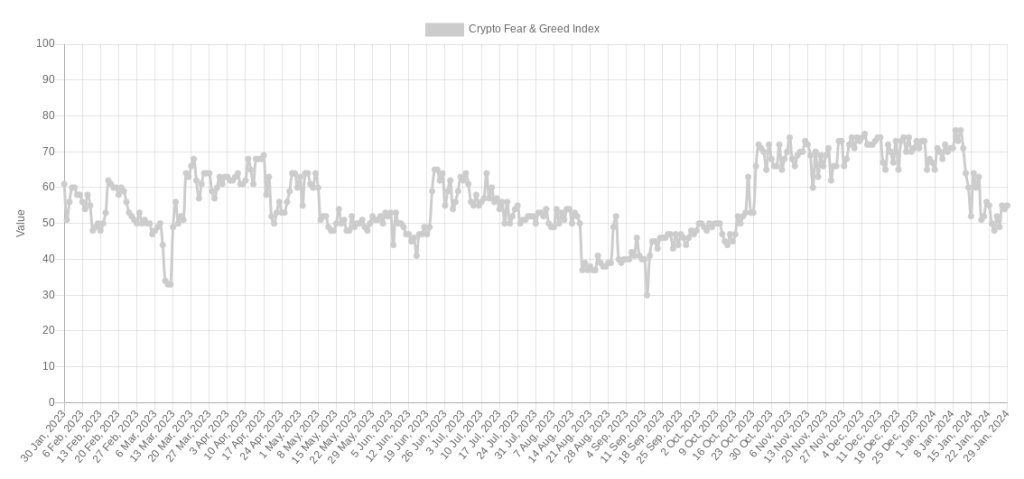
BTC price has seen $49,000 and $38,000 this month, but with a deluge of diary dates in the coming days, the stage is set for classic Bitcoin volatility.

Bitcoin (BTC) heads into the first monthly close of 2024 with a round trip to its yearly starting point — what’s next?
In a key week for United States macroeconomic policy, BTC price action continues to hover around $42,000.
This sets the stage for a new volatility chapter to come — the past month has seen highs of $49,000, which were followed by snap losses of 20%.
Now, Bitcoin bulls are preparing to contend with the Federal Reserve and U.S. political moves in what could yet spark further upheaval for crypto markets.
This is while the dust settles on the launch of the first U.S. spot Bitcoin exchange-traded funds (ETFs) — a topic of debate in their own right.
Under the hood, meanwhile, Bitcoin network fundamentals are preparing to shake off the impact of the comedown from $49,000 and revert to the upside — difficulty, for example, is forecast to increase by 4% in the coming days.
Cointelegraph looks at the major talking points impacting Bitcoin and crypto market performance into February and beyond.
Bitcoin comes full circle to end January
In contrast to others before it, the weekend produced actionable signals for traders, with BTC/USD hitting $42,800 on Bitstamp, data from Cointelegraph Markets Pro and TradingView shows.

This marked its highest since Jan. 18, and so far, Bitcoin is holding higher into the week’s first Asia trading session.
The latest BTC price action forms part of a relief bounce that entered last week after a reversal at $38,500. This was accompanied by misgivings among traders, some of which remain — Bitcoin, they warn, could easily fetch lower lows in future.
Analyzing the current status quo, however, popular trader Skew saw grounds for cautious optimism on lower timeframes. In a summary on X (formerly Twitter), he flagged the area at $42,000 as the one to watch.
“From this perspective it doesn’t look so bad tbh, however 1H/4H trend establishment will be important confluence with this mid range level,” he wrote, referring to the daily chart.
Skew added that he was looking for positive signs on Bitcoin’s relative strength index (RSI) on hourly timeframes, specifically recovering and holding above the 50 midpoint.

The weekly close meanwhile managed just over $42,000, giving BTC/USD around 1.1% upside versus the prior close.
For Skew, the entirety of the past two months, together with their swing high and subsequent low, constituted an enduring range.
“Technically still same weekly range & two failed swings (no expansion), which ended up being liquidity grabs,” he commented.

Progress was nonetheless promising for fellow trader and analyst Rekt Capital after BTC/USD risked a breakdown from this weekly range.
#BTC
As the new Weekly Close approaches, it looks like Bitcoin is almost set to rescue its Weekly range$BTC #Crypto #Bitcoin pic.twitter.com/ayJzi5G5tW
— Rekt Capital (@rektcapital) January 28, 2024
Fed rates decision tops rocky macro week
Despite renewed turmoil on Chinese markets and problems for property giant Evergrande, the topic on everyone’s lips this week comes in the form of the U.S. decisions on both interest rates and other aspects of economic policy.
The former is the task of the Fed, and will be revealed at the Federal Open Market Committee (FOMC) meeting on Jan. 31.
Inflation has broadly conformed to the Fed’s hopes, cooling with macro data prints over successive months with few outliers.
Markets have long assumed that this month’s FOMC meeting will yield few surprises, instead favoring the start of interest rate cuts at the next meeting in March.
Per data from CME Group’s FedWatch Tool, the odds of rates staying at their current levels after Jan. 31 are nearly 98%.

“Buckle up for an action packed week ahead,” trading resource The Kobeissi Letter summarized in its weekly rundown of key macro data releases.
Key Events This Week:
1. JOLTs Job Data – Tuesday
2. CB Consumer Confidence – Tuesday
3. Fed Interest Rate Decision – Wednesday
4. ISM Manufacturing PMI data – Thursday
5. January Jobs Report – Friday
6. ~20% of S&P 500 companies report earnings
Buckle up for an action…
— The Kobeissi Letter (@KobeissiLetter) January 28, 2024
As Cointelegraph reported, the coming days will be about more than just inflation. How the government handles other issues — notably regional bank stability — is also on the radar.
Earlier, Arthur Hayes, former CEO of crypto exchange BitMEX, even predicted a retreat to $30,000 for Bitcoin should banking turbulence return to the U.S. in the coming months. What Treasury Secretary Janet Yellen decides this week, he argued, would be key.
Mining difficulty set to resume all-time high streak
The trajectory for Bitcoin network fundamentals is once again clear — and it’s a case of “up only.”
The latest live estimates from statistics resource BTC.com puts difficulty growing by 4% at its next automated readjustment — taking it to new all-time highs.

The adjustment will also wipe out the 3.9% drop seen two weeks prior at the height of uncertainty regarding ETF flows.
While the size of the change can still vary widely depending on price action in the intervening period, difficulty is currently set to reach 73.59 trillion.
Similarly resurgent is hash rate, the estimated deployment of processing power to the Bitcoin blockchain, which has grown 10% in the past week alone.
Interestingly, Hash rate bottomed just before the #Bitcoin price bottomed.
Hash rate is now up roughly 10% in the past 10 days. #Bitcoin up 7% in the past five days. https://t.co/1x4HgJbQSc
— James Van Straten (@jvs_btc) January 28, 2024
The debate around mining naturally centers on April’s block subsidy halving event, which will cut the amount earned per block (excluding fees) by 50%.
Last week, new research from financial services firm Cantor Fitzgerald warned that the majority of major mining operations would face financial problems as a result of the halving based on current profitability.
At the same time, data from on-chain analytics platform CryptoQuant already placed miners in “extremely underpaid” territory thanks to a combination of waning spot price and a drop in fee revenue.
This status quo, CryptoQuant head of research Julio Moreno added on X, was the least favorable since June 2022.

Speculators feature in Bitcoin market bounce
Delving into the significance of Bitcoin’s recent reversal, James Van Straten, research and data analyst at crypto insights firm CryptoSlate, brought back some familiar levels.
$38,800, he noted, marks the aggregate realized price (RP) for Bitcoin speculators, known as short-term holders (STHs).
STHs are entities holding BTC for 155 days or less, and their cost basis has functioned as support over the past year.
Van Straten noted that RP generally continues to head higher, with investor cohorts on aggregate paying more to acquire BTC.
“The last time STH RP was at $38.3k was the 2021 bull run and the price was $60,000,” he added alongside data from on-chain analytics firm Glassnode.
“This shows how much more sustainable this bull run is.”

As Cointelegraph reported, the retreat from $49,000 — which itself marked Bitcoin’s highest levels since December 2021 — sparked a mass exit among STHs, many of which offloaded recently bought coins at a loss.
Crypto market sentiment near 3-month lows
The past weeks have witnessed sell-side pressure from some major entities, notably defunct exchange FTX.
Related: Bitcoin range consolidation sets the stage for SOL, AVAX RNDR and SUI
As Cointelegraph reported, this added to market concerns over the Grayscale Bitcoin Trust (GBTC), the institutional investment vehicle now itself a spot ETF.
While outflows from GBTC slowed last week, sentiment continues to take stock of perceived barriers to BTC price recovery.
According to data from the Crypto Fear & Greed Index, sentiment across crypto hit its lowest in three months on Jan. 24.
Fear & Greed, while a lagging indicator, nonetheless paints a nervous picture among investors, having seen highs of 76/100 — nearly marking a breakout of “extreme greed” — prior to the ETF launch on Jan. 11.

For research firm Santiment, meanwhile, that data marked what it calls “peak euphoria” around Bitcoin.
With the S&P 500 subsequently making new all-time highs, Santiment considered whether crypto might yet play a game of catch-up.
#Bitcoin crept over $42K today, even though #altcoins are not following suit (yet). The #SP500 had just made a new #AllTimeHigh yesterday, and the #bullish argument for #crypto is that $BTC and other large caps may 'regress to the mean' and play catch-up with the
(Cont) pic.twitter.com/ifLxqKRpa7
— Santiment (@santimentfeed) January 26, 2024
“The cryptocurrency sector has really lagged behind stock markets, particularly after it began deviating in the opposite direction back on January 17th,” it argued.
This article does not contain investment advice or recommendations. Every investment and trading move involves risk, and readers should conduct their own research when making a decision.

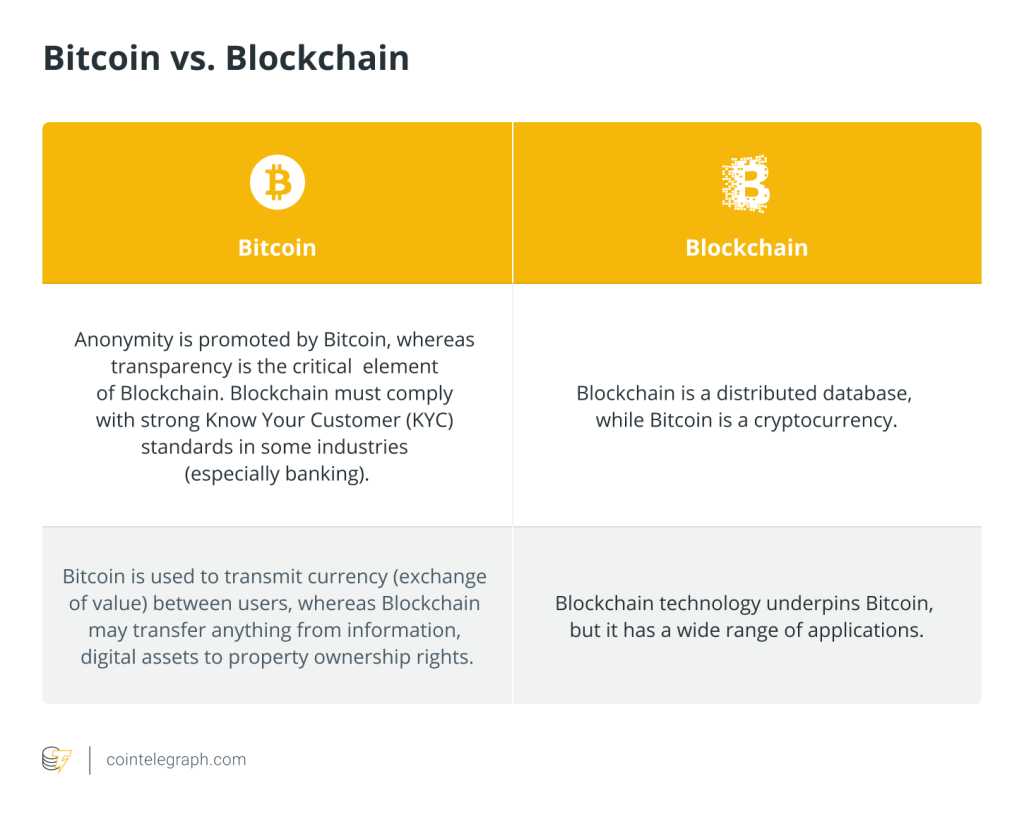
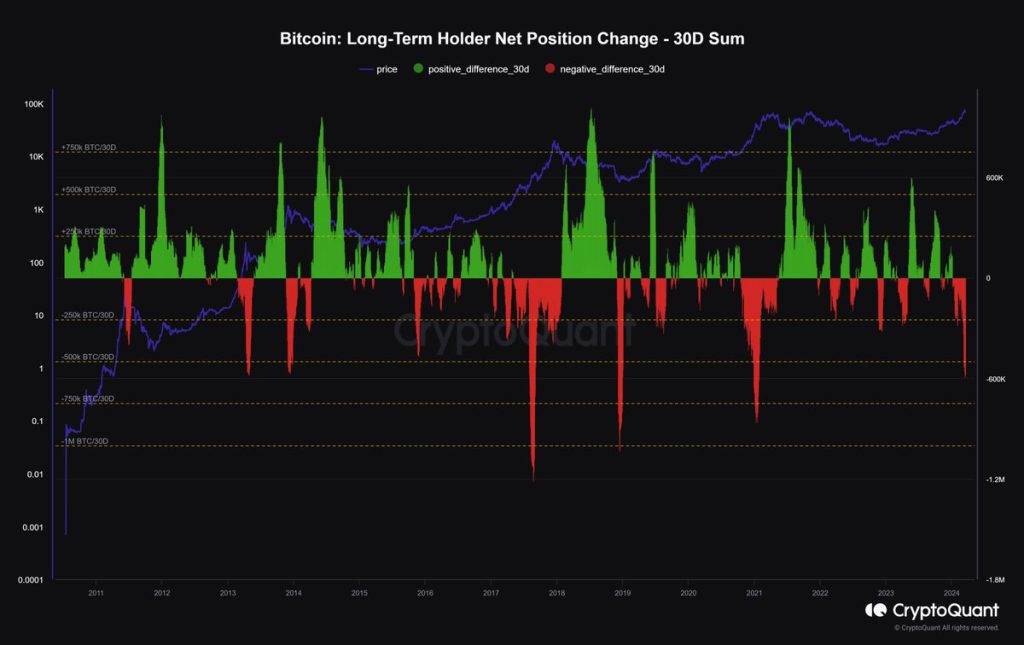
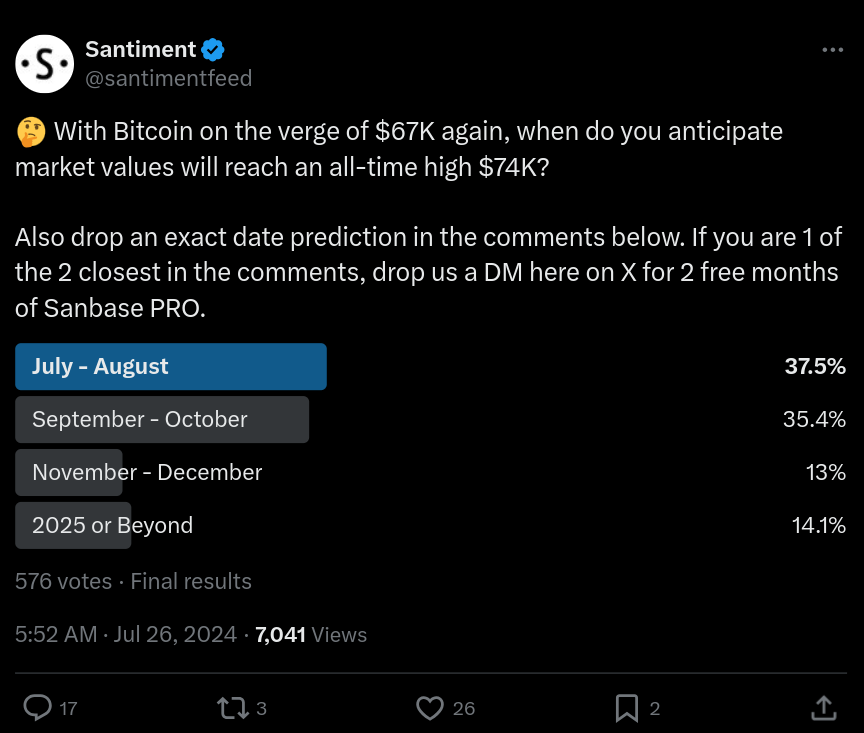
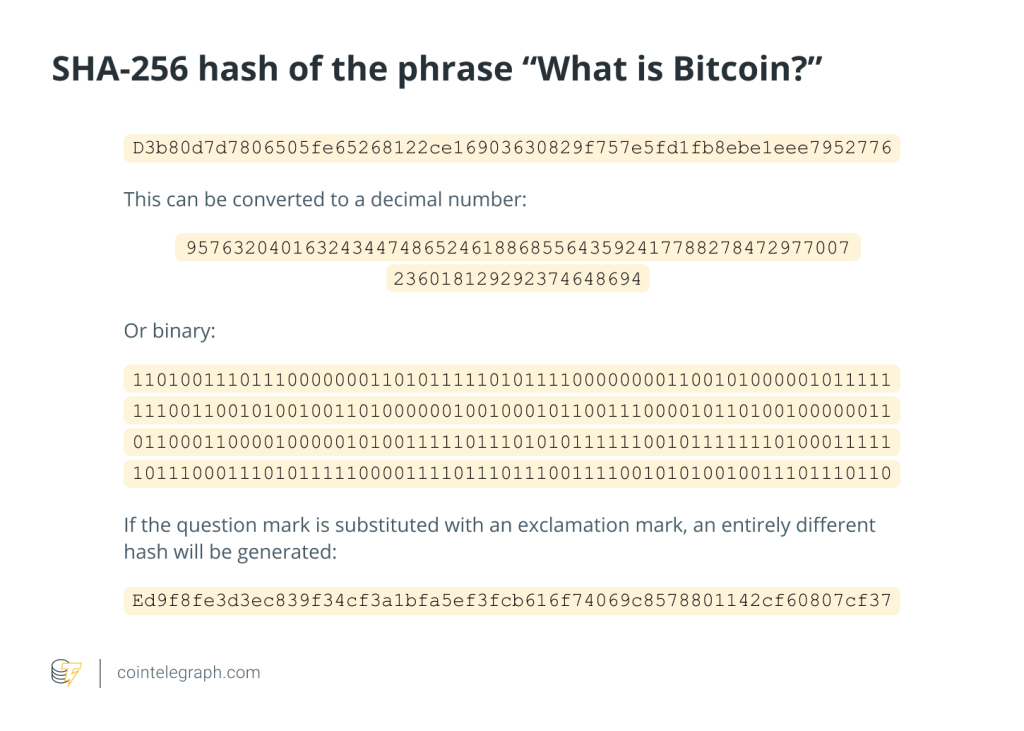
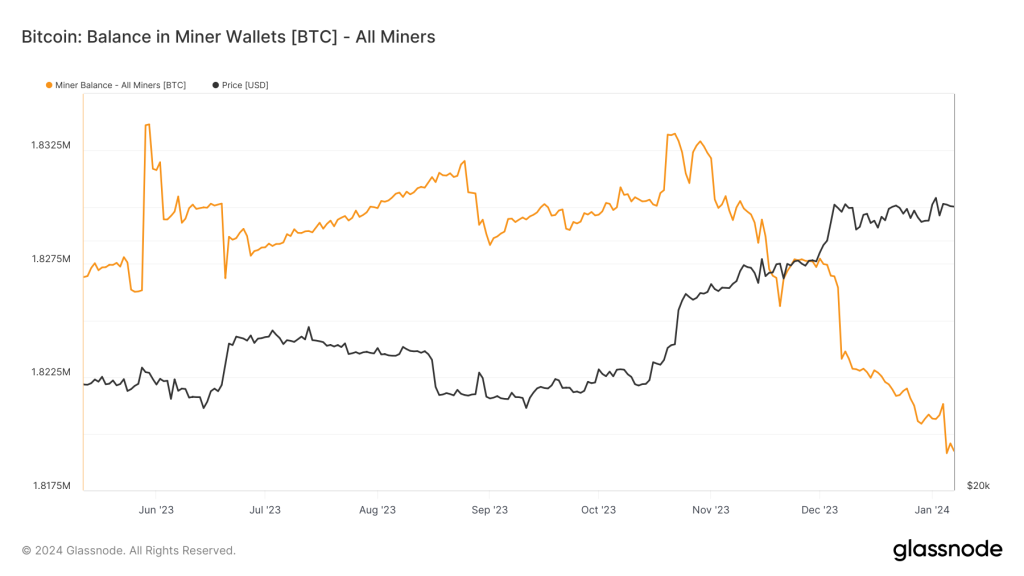
… [Trackback]
[…] Here you will find 53950 more Information to that Topic: x.superex.com/academys/markets/3816/ […]
… [Trackback]
[…] Find More on that Topic: x.superex.com/academys/markets/3816/ […]
… [Trackback]
[…] There you can find 76271 additional Info on that Topic: x.superex.com/academys/markets/3816/ […]
… [Trackback]
[…] Read More on to that Topic: x.superex.com/academys/markets/3816/ […]
… [Trackback]
[…] Here you can find 1025 more Information to that Topic: x.superex.com/academys/markets/3816/ […]
… [Trackback]
[…] Read More here to that Topic: x.superex.com/academys/markets/3816/ […]
… [Trackback]
[…] Information to that Topic: x.superex.com/academys/markets/3816/ […]
… [Trackback]
[…] Find More on that Topic: x.superex.com/academys/markets/3816/ […]
… [Trackback]
[…] Information to that Topic: x.superex.com/academys/markets/3816/ […]
… [Trackback]
[…] Read More Info here on that Topic: x.superex.com/academys/markets/3816/ […]
… [Trackback]
[…] Find More to that Topic: x.superex.com/academys/markets/3816/ […]
… [Trackback]
[…] Read More to that Topic: x.superex.com/academys/markets/3816/ […]
… [Trackback]
[…] Read More Info here to that Topic: x.superex.com/academys/markets/3816/ […]
… [Trackback]
[…] Information on that Topic: x.superex.com/academys/markets/3816/ […]